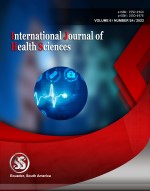Combination of one or more characteristics framework for optimizing energy in cloud computing
Keywords:
Power Usage Effectiveness (PUE), virtual machines, cloud computingAbstract
The extending advancement in the interest for dispersed figuring organizations, due to the verifiably progressed change and the high adaptability of the cloud, requires more undertakings to further develop the electrical energy adequacy of cloud server ranches. In this paper, an energy-capable creamer (EEH) framework for working on the efficiency of consuming electrical energy in server ranches is proposed and evaluated. The proposed structure relies upon both the sales' reserving and laborers' mix approaches as opposed to depending upon only one procedure as in existing related works. The EEH structure sorts the customers' requesting (tasks) according to their time and power needs before playing out the booking. It has a booking estimation that thinks about power use when taking its arranging decisions. It in like manner has an association estimation that chooses the underloaded laborers to be refreshed or rested, the over-trouble laborers, the virtual machines to be moved and the specialists that will get moved virtual machines. Moreover, the EEH structure joins a development computation for moving migrated virtual machines to new laborers.
Downloads
References
H. Yuan et al, "Biobjective Task Scheduling for Distributed Green Data Centers," IEEE Transactions on Automation Science and Engineering. doi: 10.1109/TASE.2019.2958979, online Jan.2020.
H. Yuan and H. Liu, "Pay and Energy Cost-overhauled Biobjective Task Scheduling for Green Cloud Data Centers," IEEE Transactions on Automation Science and Engineering, DOI: 10.1109/TASE.2020.2971512, on the web, Jan. 2020.
R. Yadav, W. Zhang, K. Li, C. Liu, M. Shafiq, N. K. Karn, "A flexible heuristic for regulating energy use and over-trouble has in a cloud server ranch," Wireless Networks, vol. 26, 2020, pp. 1905-1919.
M. Usman, A. Ismail, G. Salaam, H. Chizari, O. Kaiwartya, A. Gital, M. Abdullahi, A. Aliyu and, S. Dishing, "Energy-useful Nature-Inspired methodologies in Cloud figuring data centers," Telecommunication Systems, Vol. 71, 2019, pp. 275–302.
S. Mustafa et al, "SLA-Aware Best Fit Decreasing Techniques for Workload Consolidation in Clouds," IEEE Access, Vol. 7, 2019, pp. 135256 – 135267.
Q. Wu, et al., "Energy and Migration Cost-Aware Dynamic Virtual Machine Consolidation in Heterogeneous Cloud Datacenters," IEEE Transactions on Services Computing, Vol. 12, No. 4, 2019, pp. 550 – 563.
S. Mishra et al, "Part of energy-capable task in cloud using DVFS," International Journal of Computational Science and Engineering, Vol. 18, Issue 2, 2019, pp. 154-163.
B. Barzegar, H.Motameni and A. Movaghar, "EATSDCD: A harmless to the ecosystem power energy-careful arranging estimation for equivalent taskbased application using grouping, duplication and DVFS technique in cloud datacenters," Journal of Intelligent and Fuzzy Systems, Vol. 36, No. 6, 2019, pp. 5135-5152.
Rinartha, K., & Suryasa, W. (2017). Comparative study for better result on query suggestion of article searching with MySQL pattern matching and Jaccard similarity. In 2017 5th International Conference on Cyber and IT Service Management (CITSM) (pp. 1-4). IEEE.
M. Sharma and R. Garg, "HIGA: Harmony-jazzed up genetic estimation for rack-careful energy-successful task making arrangements for cloud server ranches," Engineering Science and Technology, an International Journal, 2019, https://doi.org/10.1016/j.jestch.2019.03.009.
Chen Li, LisuHuo, and Huangke Chen, "Consistent Workflows Oriented Hybrid Scheduling Approach with Balancing Host Weighted Square Frequencies in Clouds" IEEE Access, DOI: 10.1109/ACCESS.2019.2955013
Published
How to Cite
Issue
Section
Copyright (c) 2022 International journal of health sciences

This work is licensed under a Creative Commons Attribution-NonCommercial-NoDerivatives 4.0 International License.
Articles published in the International Journal of Health Sciences (IJHS) are available under Creative Commons Attribution Non-Commercial No Derivatives Licence (CC BY-NC-ND 4.0). Authors retain copyright in their work and grant IJHS right of first publication under CC BY-NC-ND 4.0. Users have the right to read, download, copy, distribute, print, search, or link to the full texts of articles in this journal, and to use them for any other lawful purpose.
Articles published in IJHS can be copied, communicated and shared in their published form for non-commercial purposes provided full attribution is given to the author and the journal. Authors are able to enter into separate, additional contractual arrangements for the non-exclusive distribution of the journal's published version of the work (e.g., post it to an institutional repository or publish it in a book), with an acknowledgment of its initial publication in this journal.
This copyright notice applies to articles published in IJHS volumes 4 onwards. Please read about the copyright notices for previous volumes under Journal History.
















